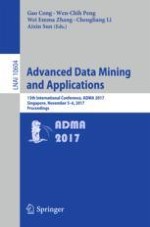This book constitutes the refereed proceedings of the 13th International Conference on Advanced Data Mining and Applications, ADMA 2017, held in Singapore in November 2017.
The 20 full and 38 short papers presented in this volume were carefully reviewed and selected from 118 submissions. The papers were organized in topical sections named: database and distributed machine learning; recommender system; social network and social media; machine learning; classification and clustering methods; behavior modeling and user profiling; bioinformatics and medical data analysis; spatio-temporal data; natural language processing and text mining; data mining applications; applications; and demos.
